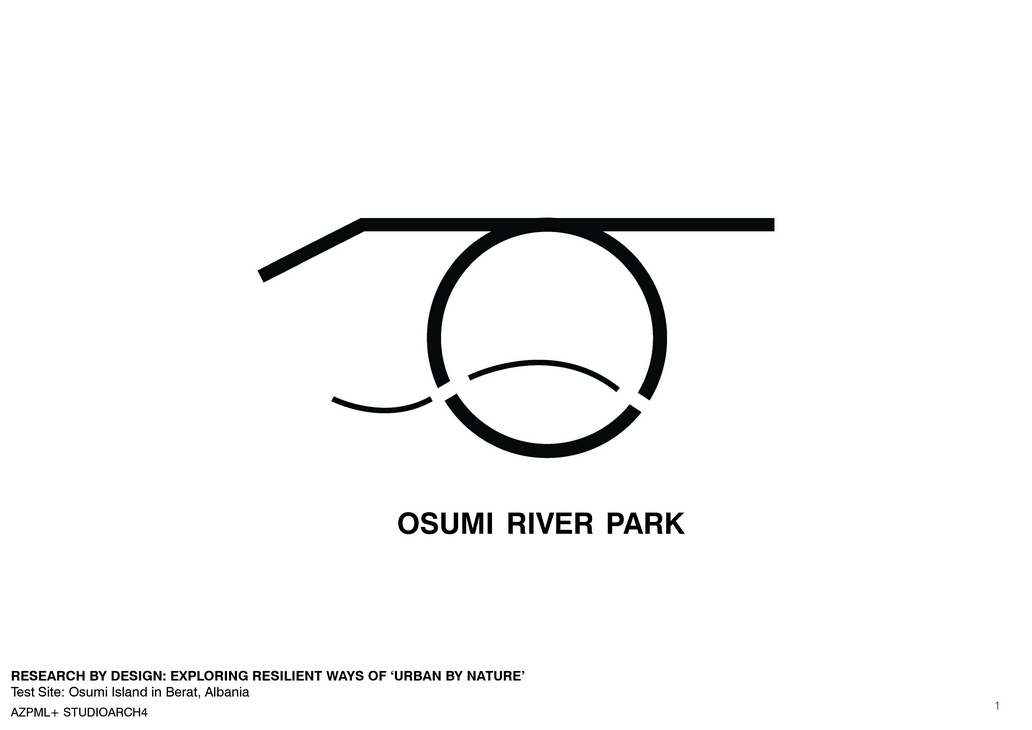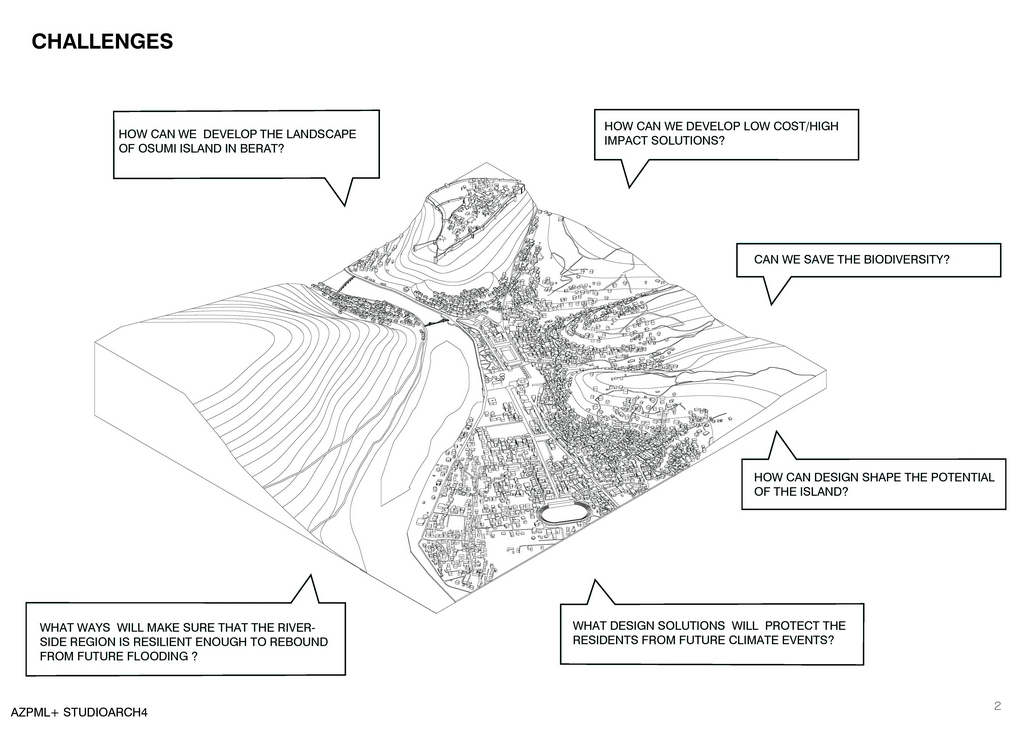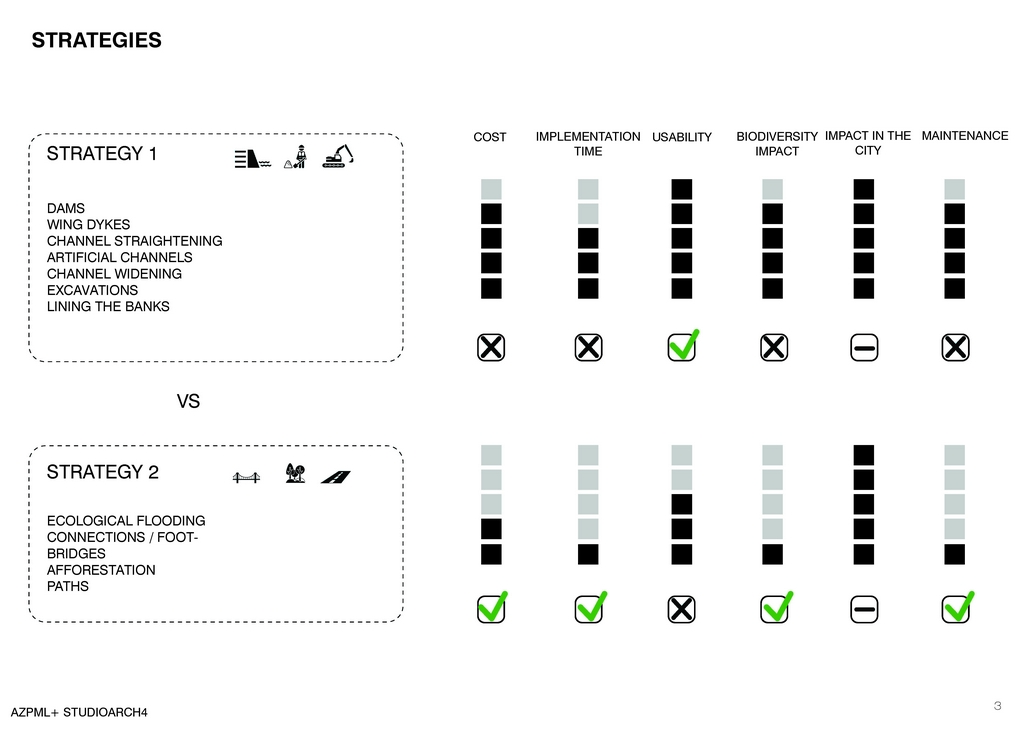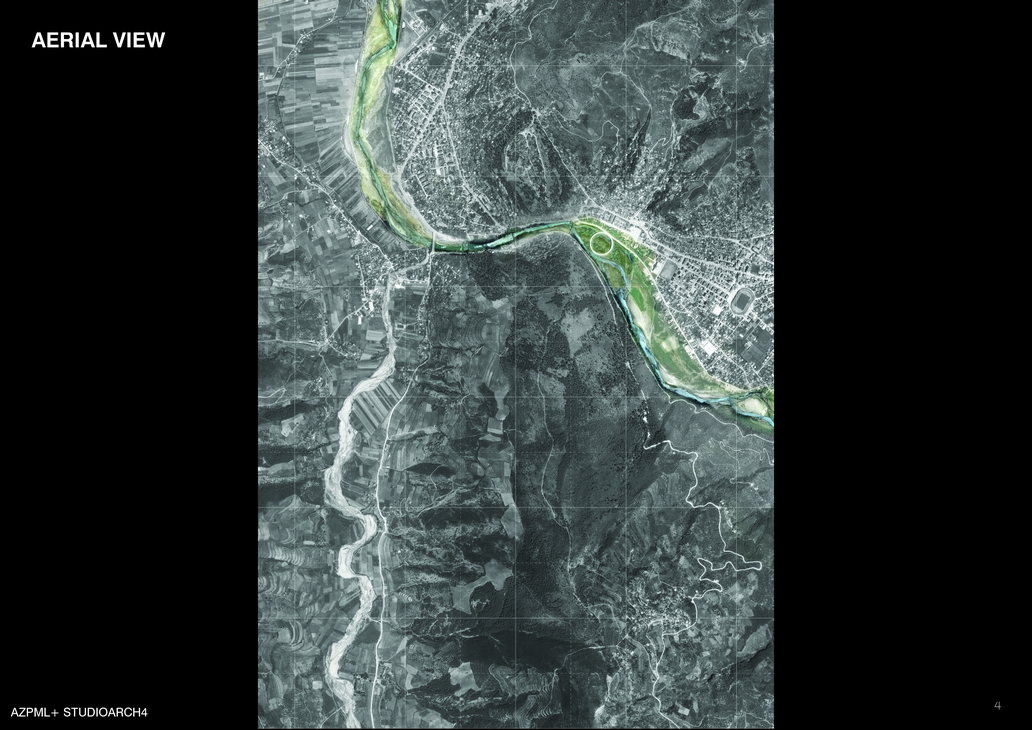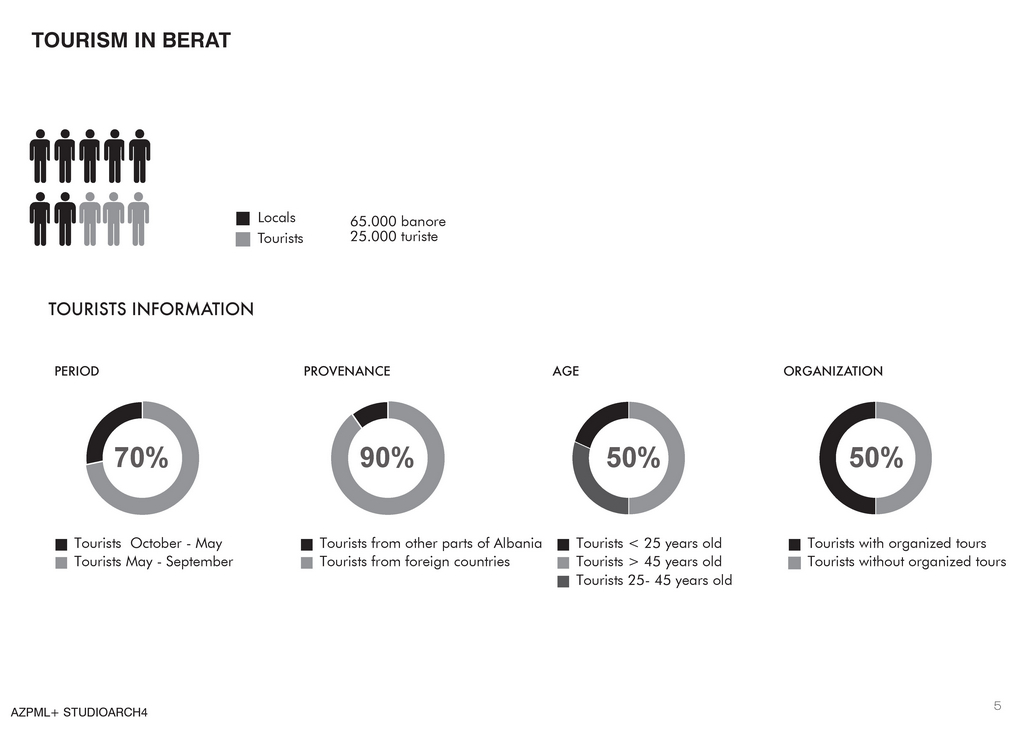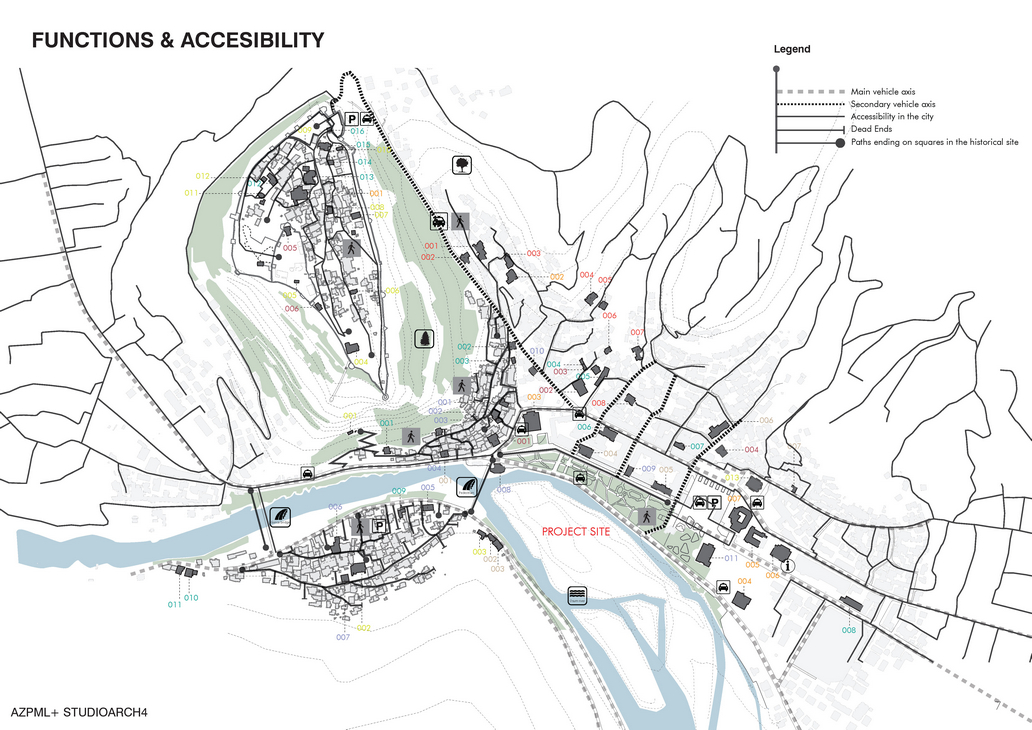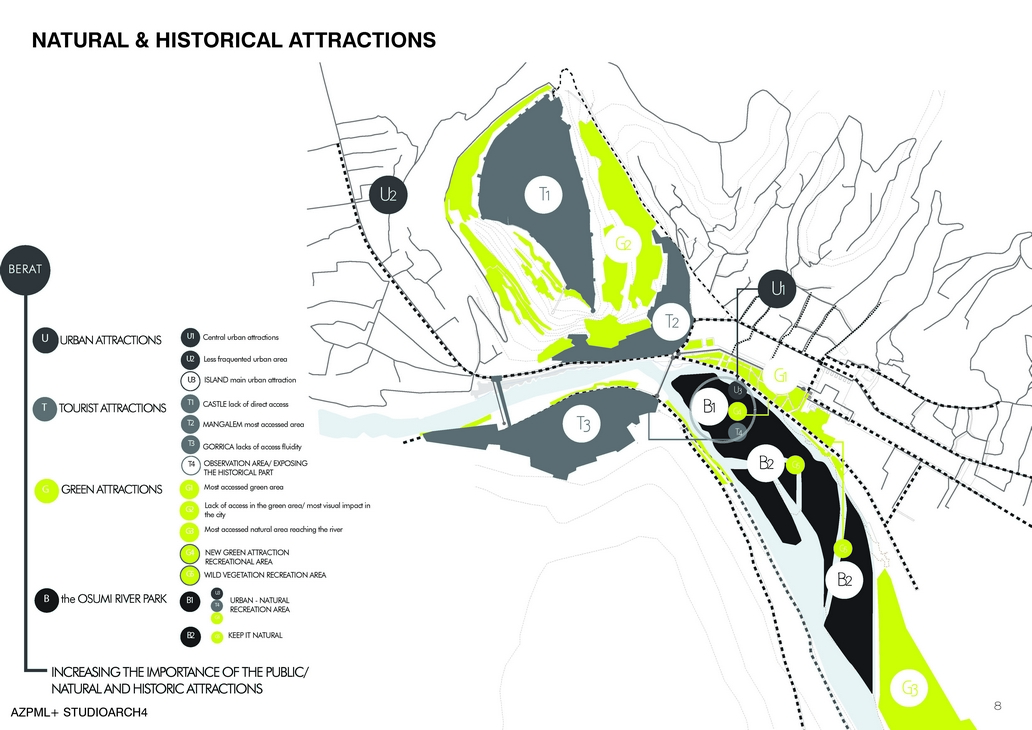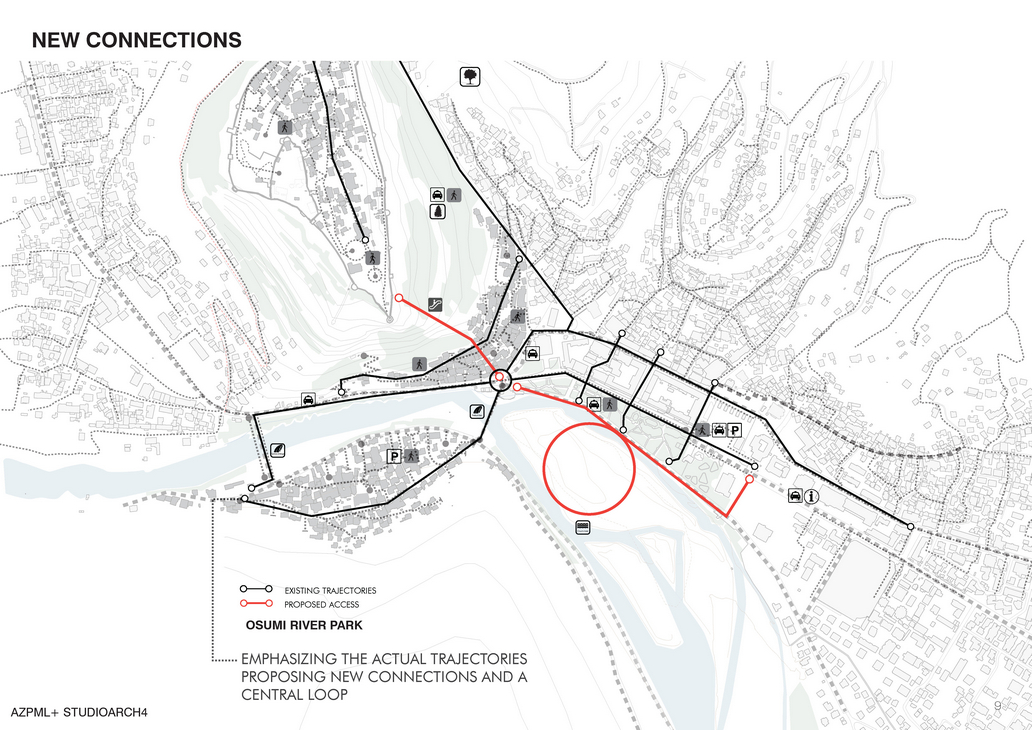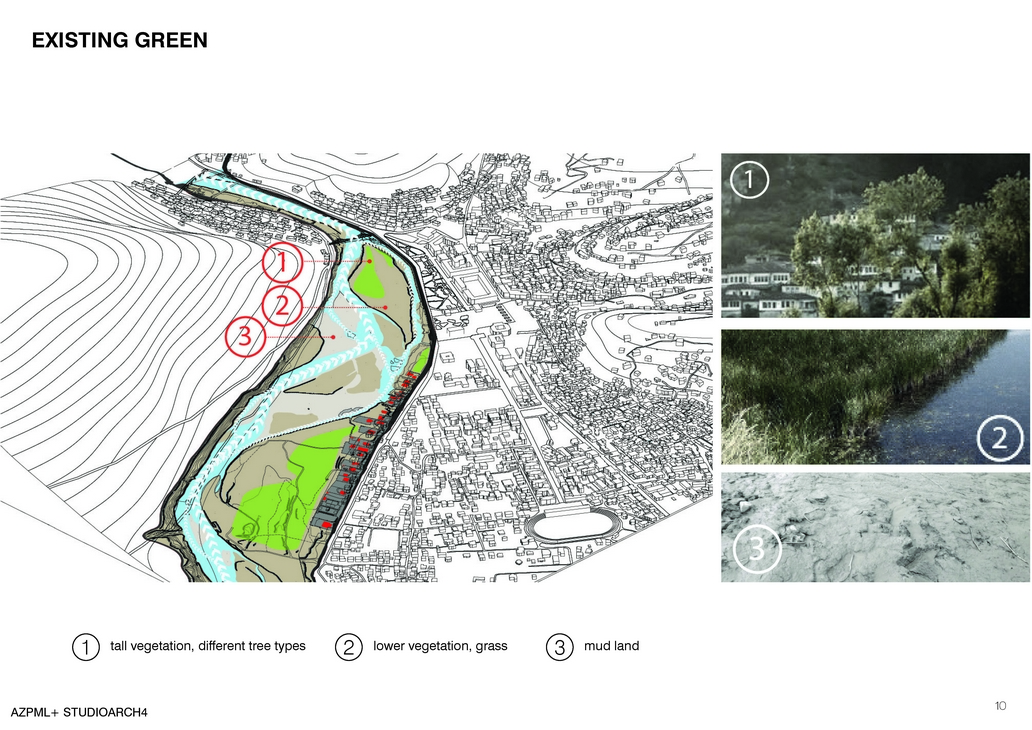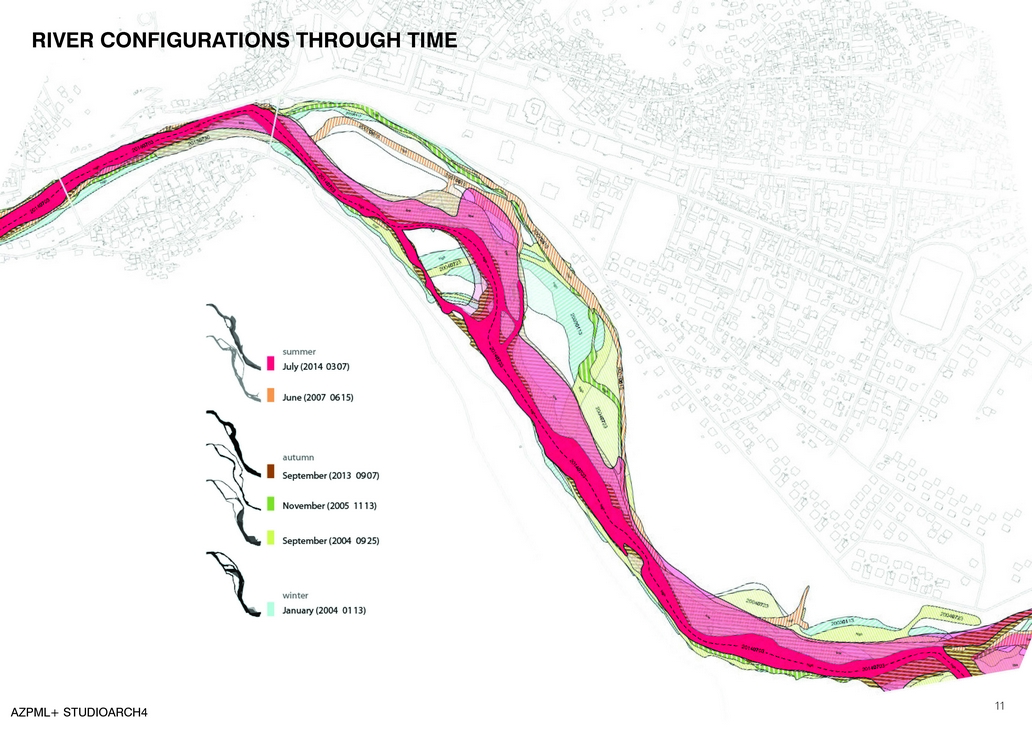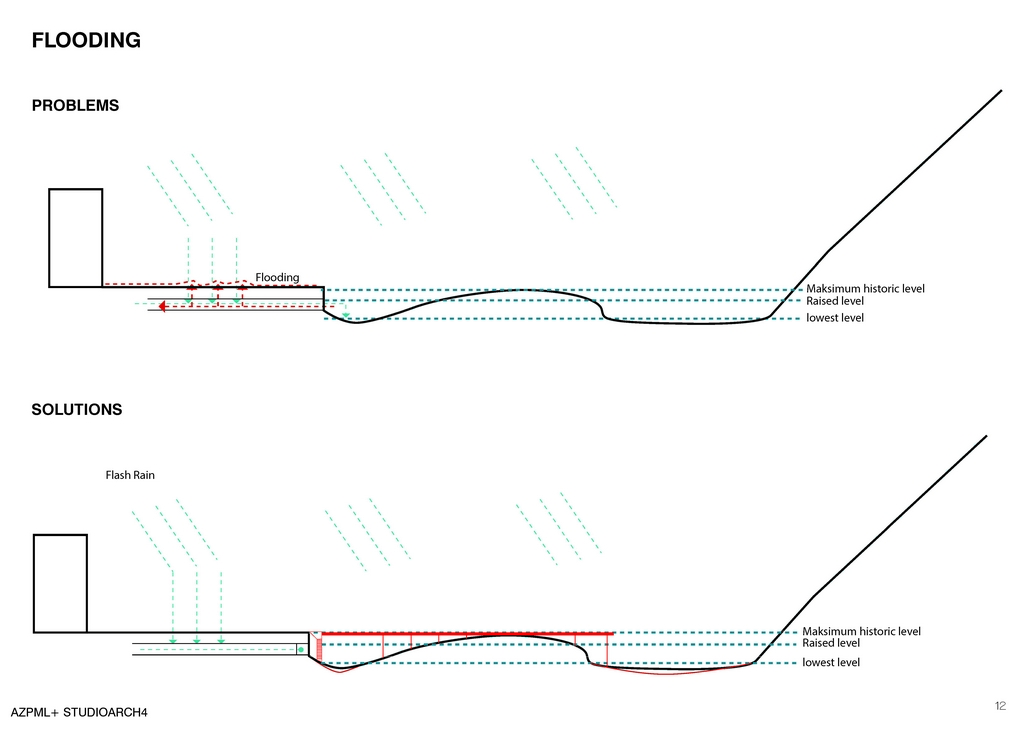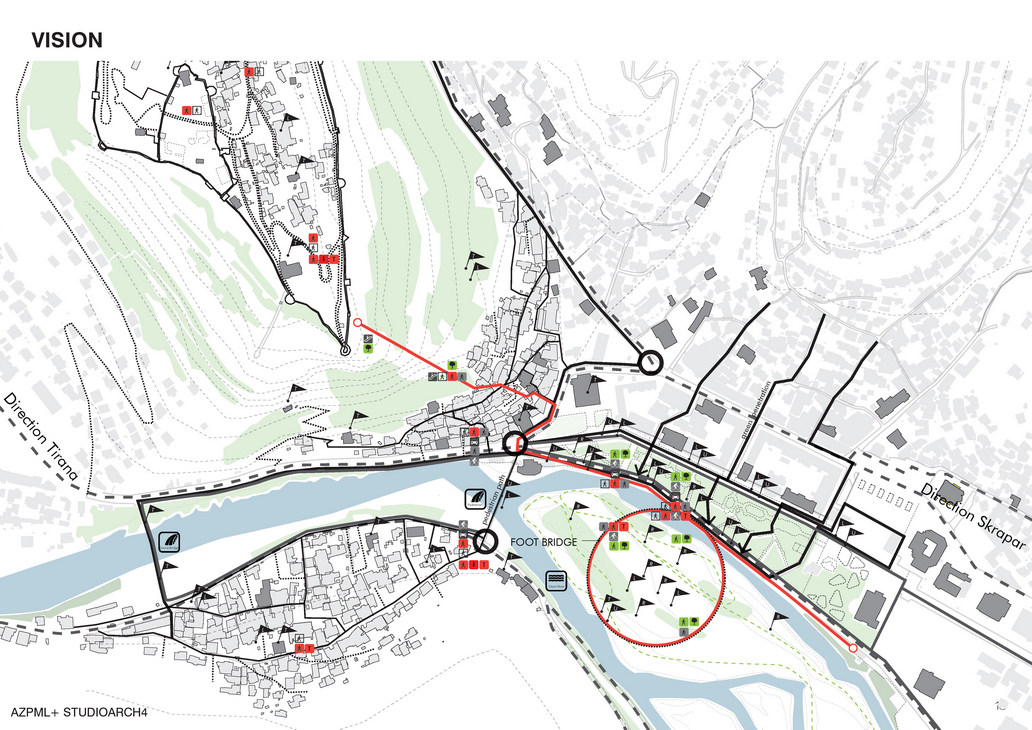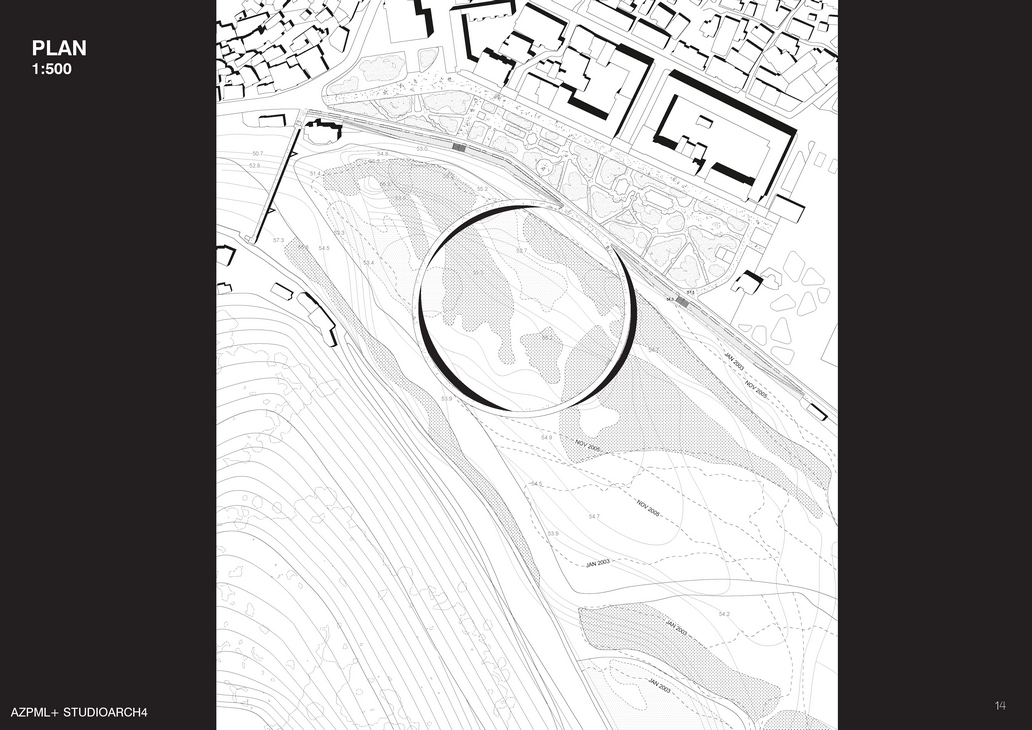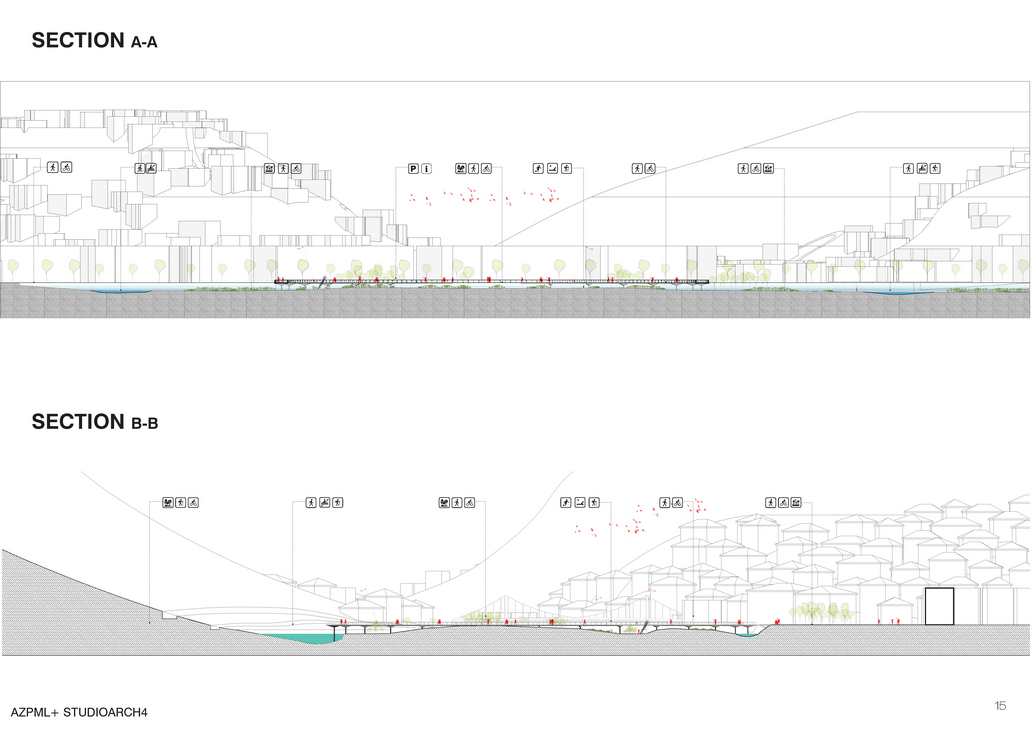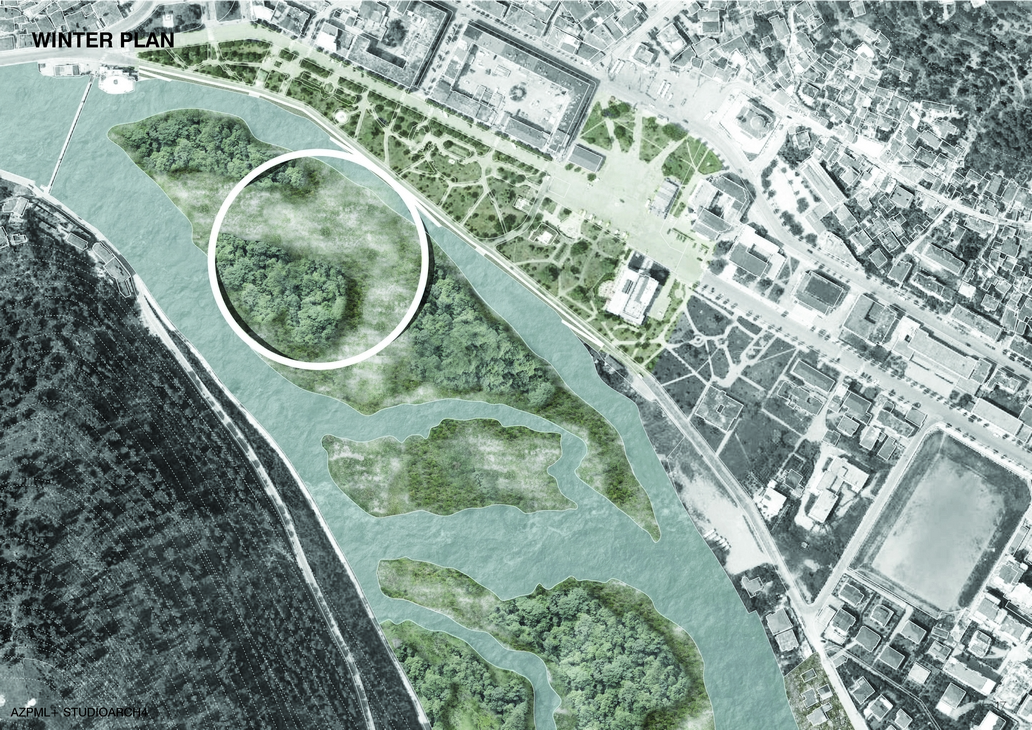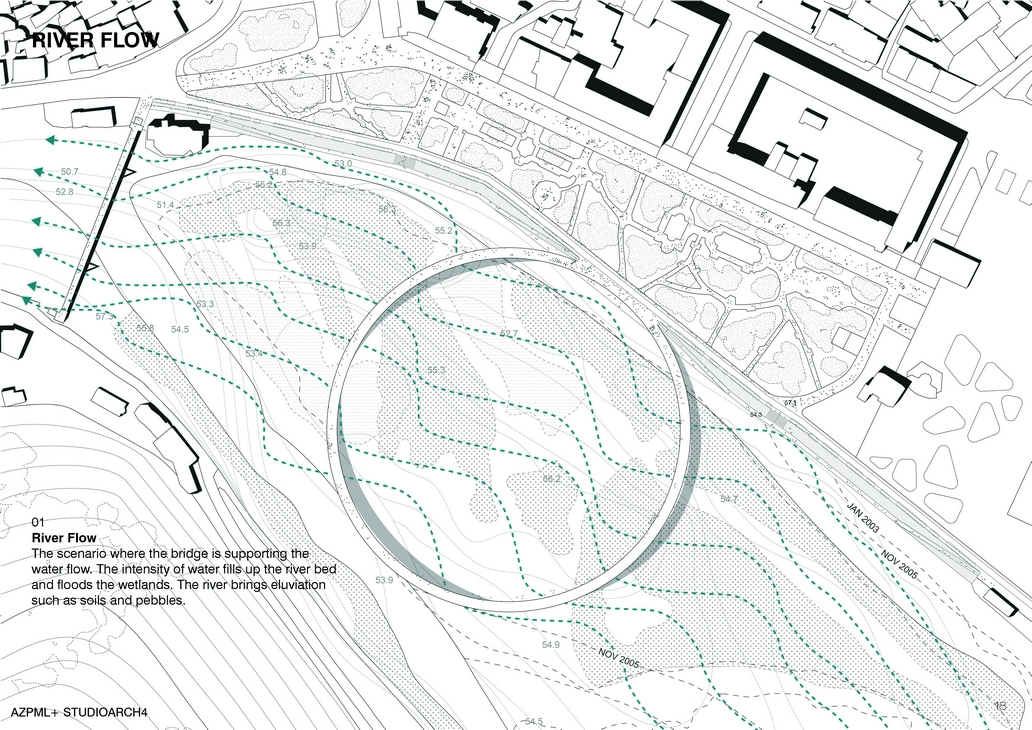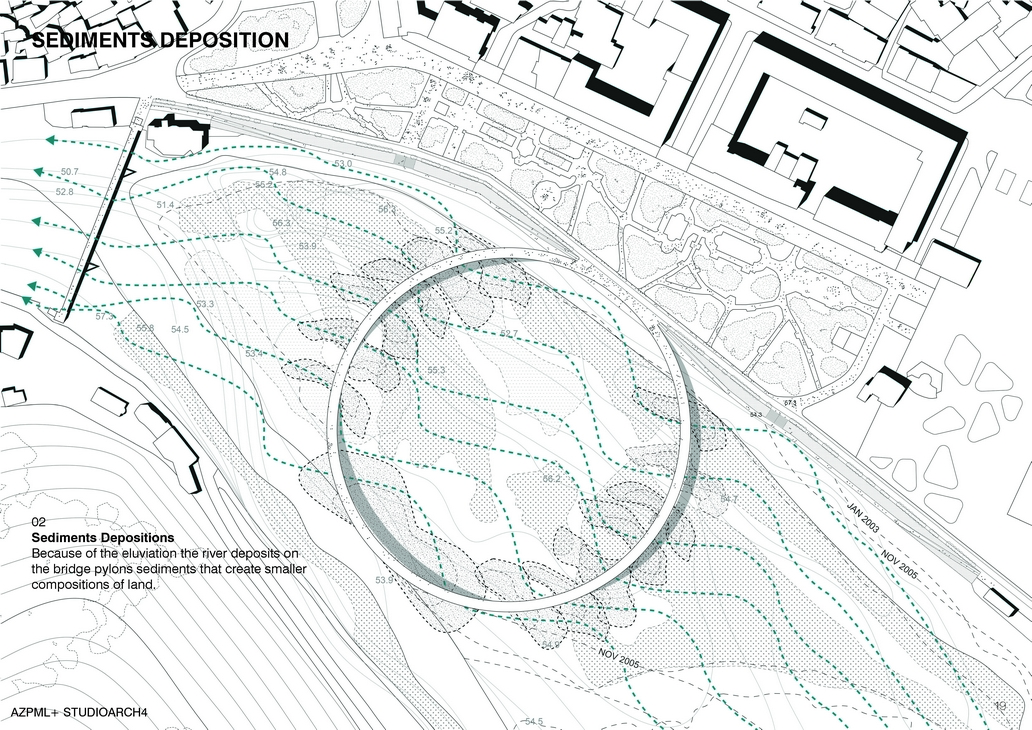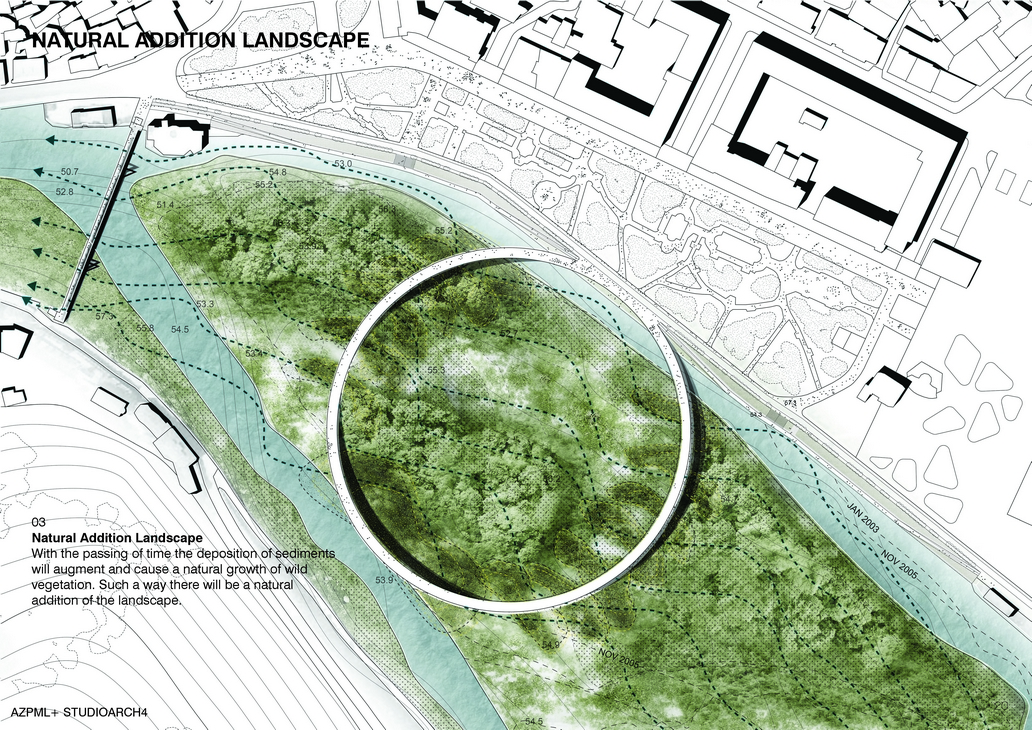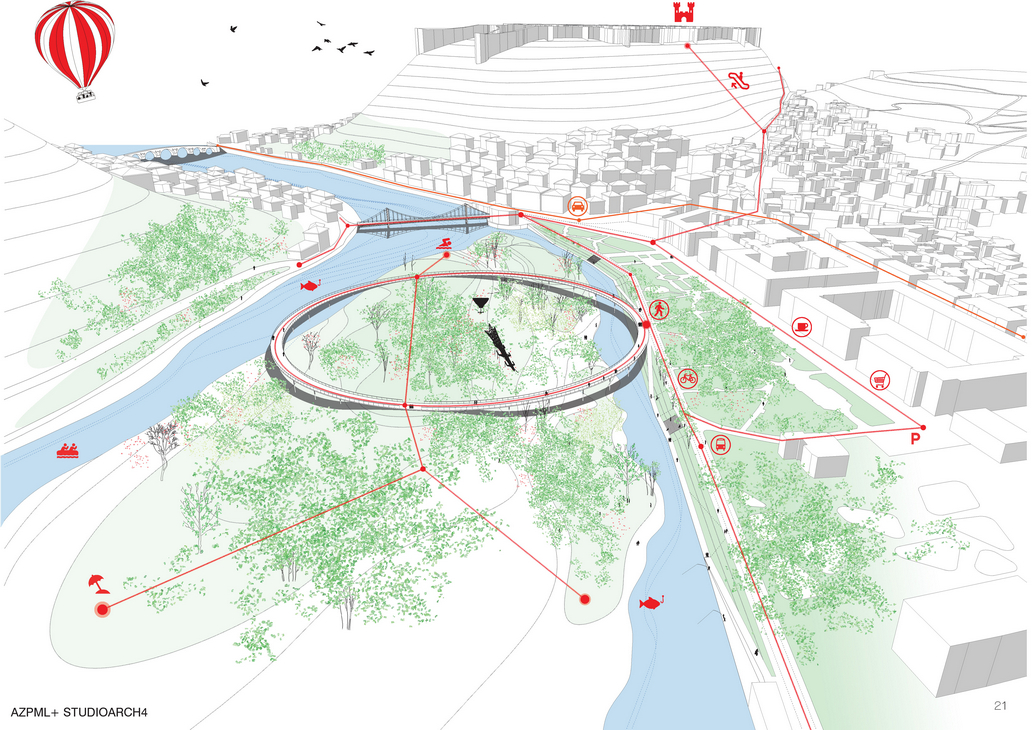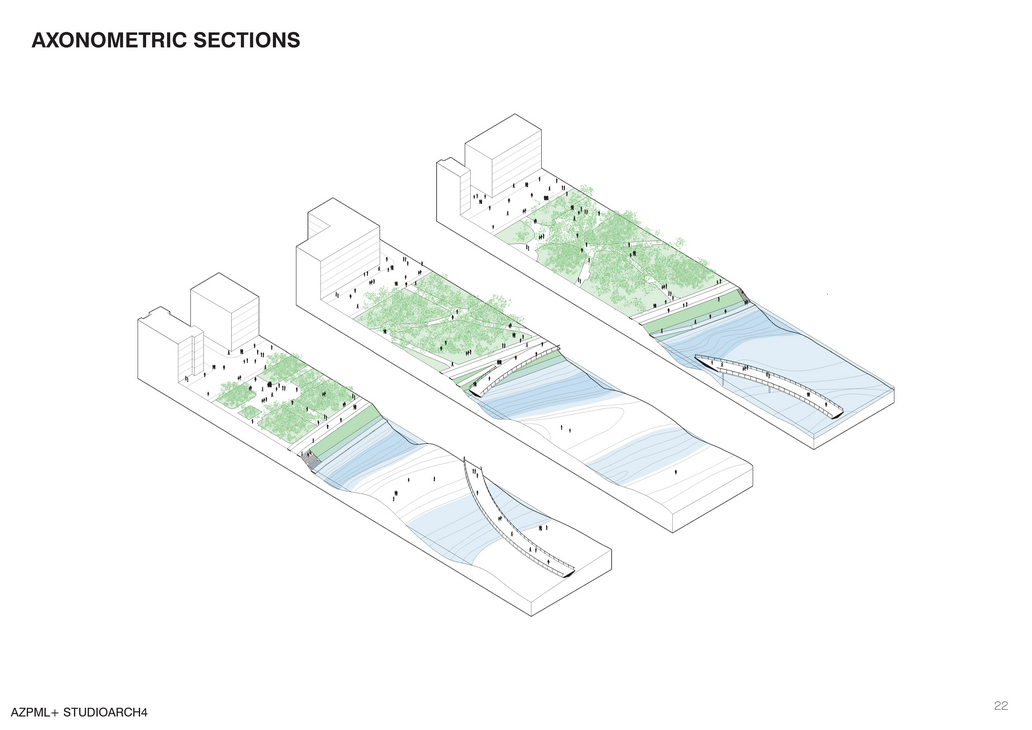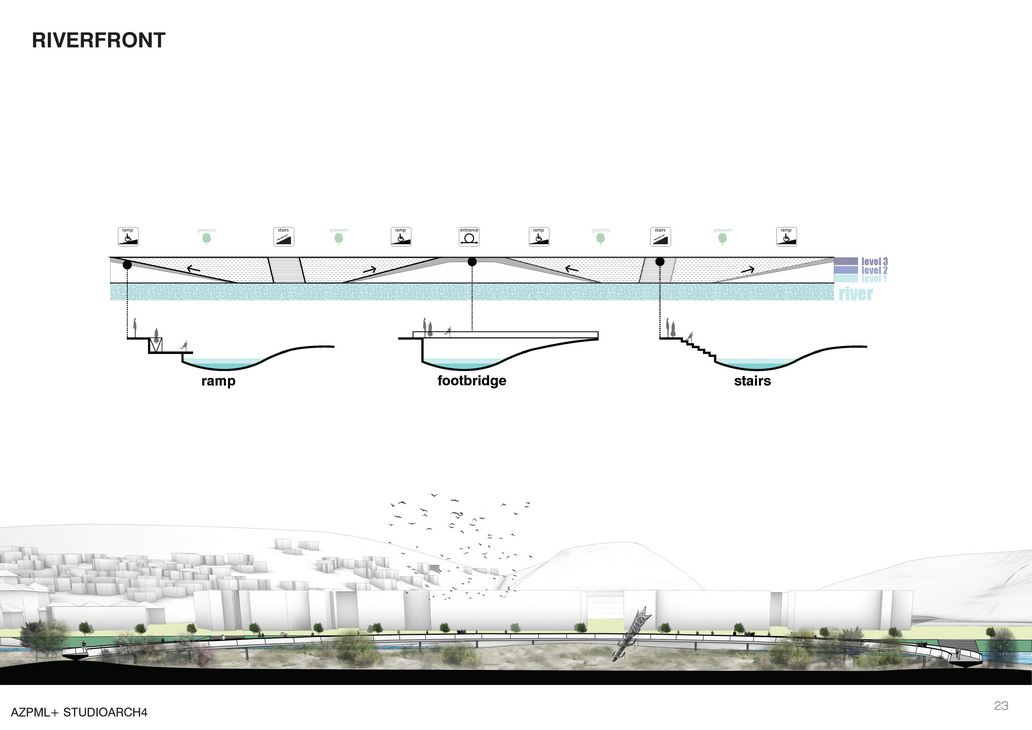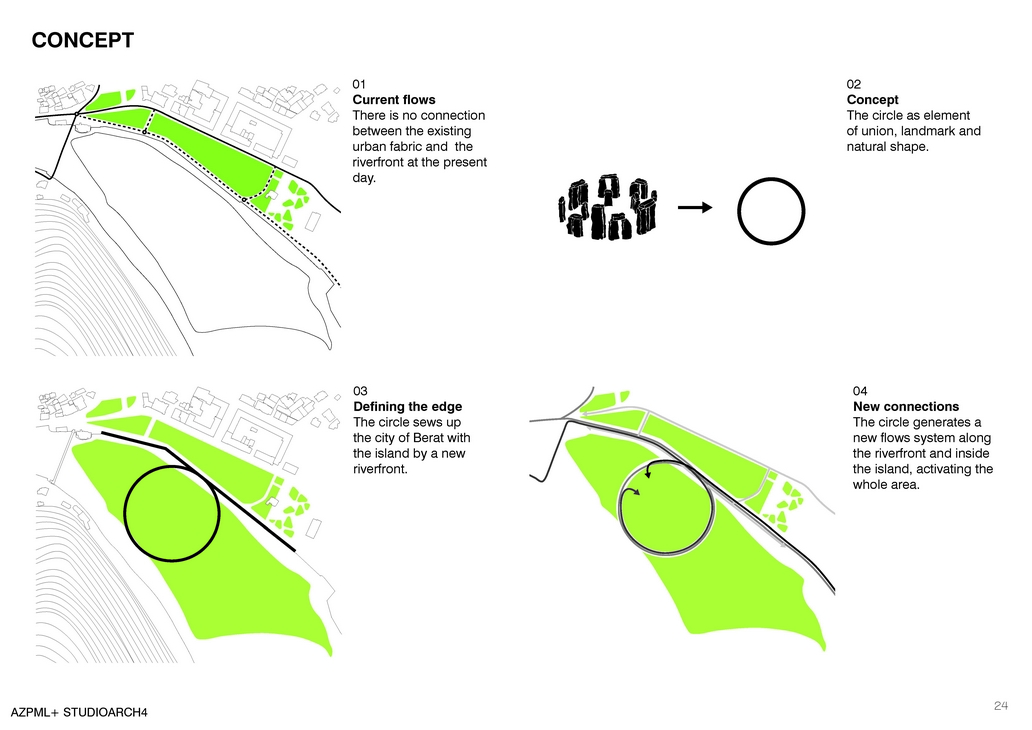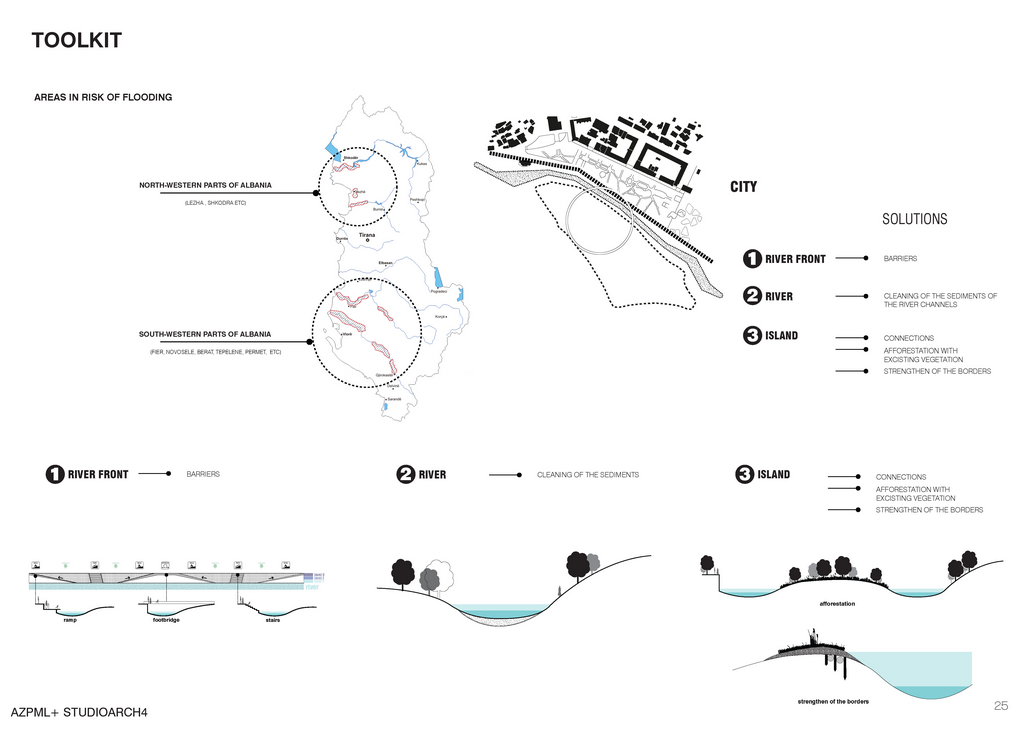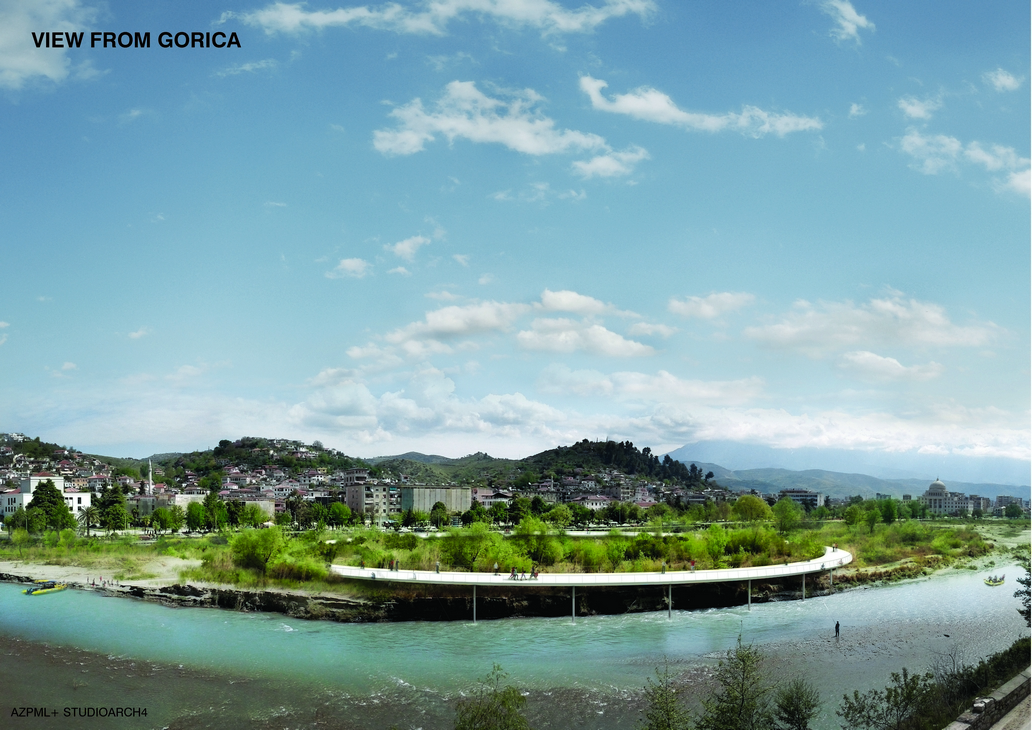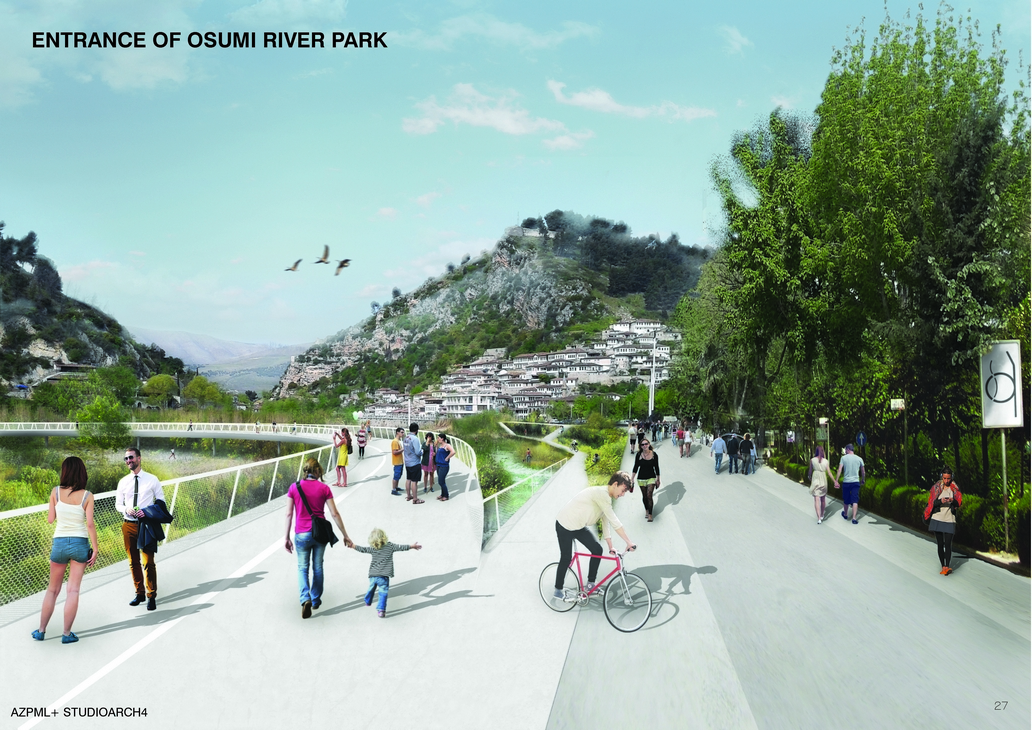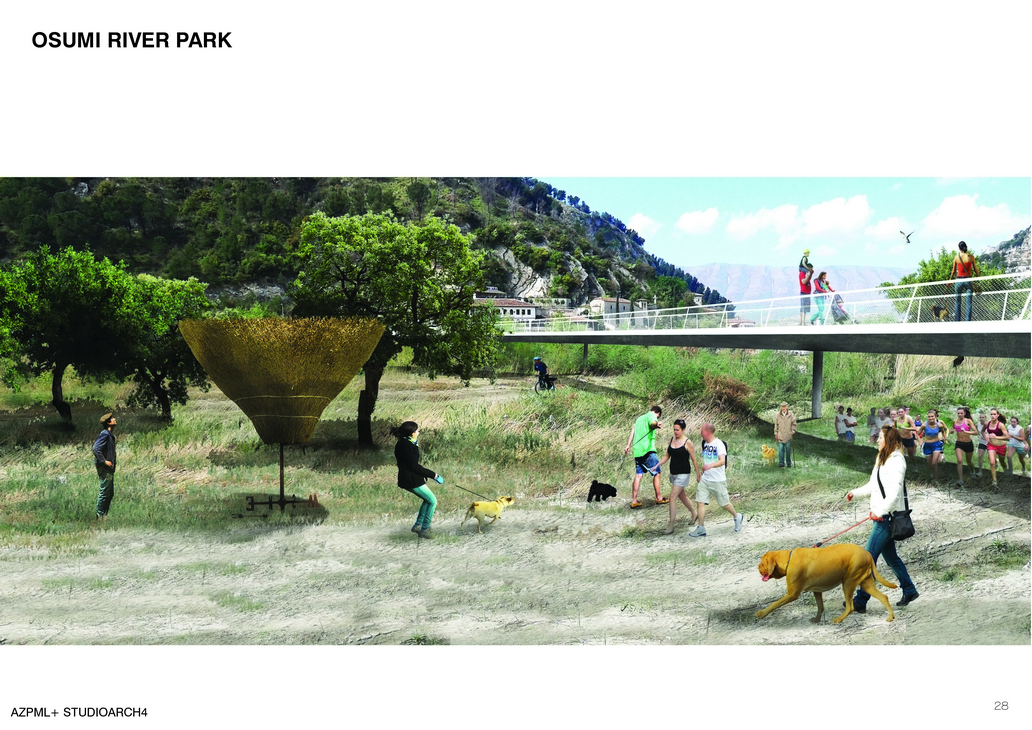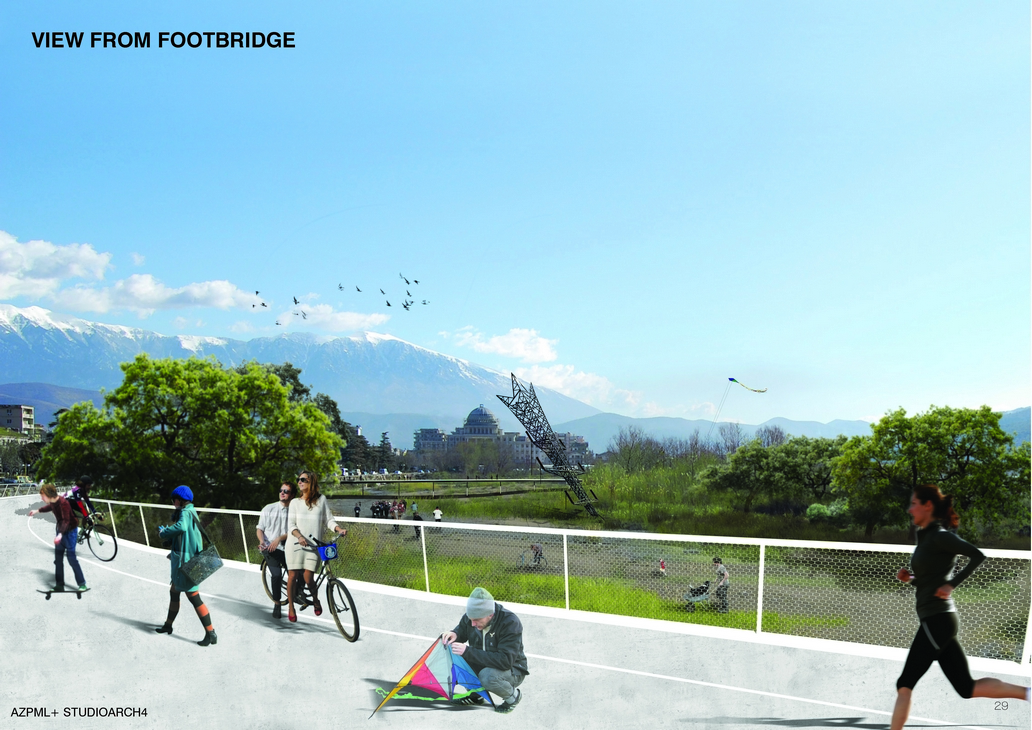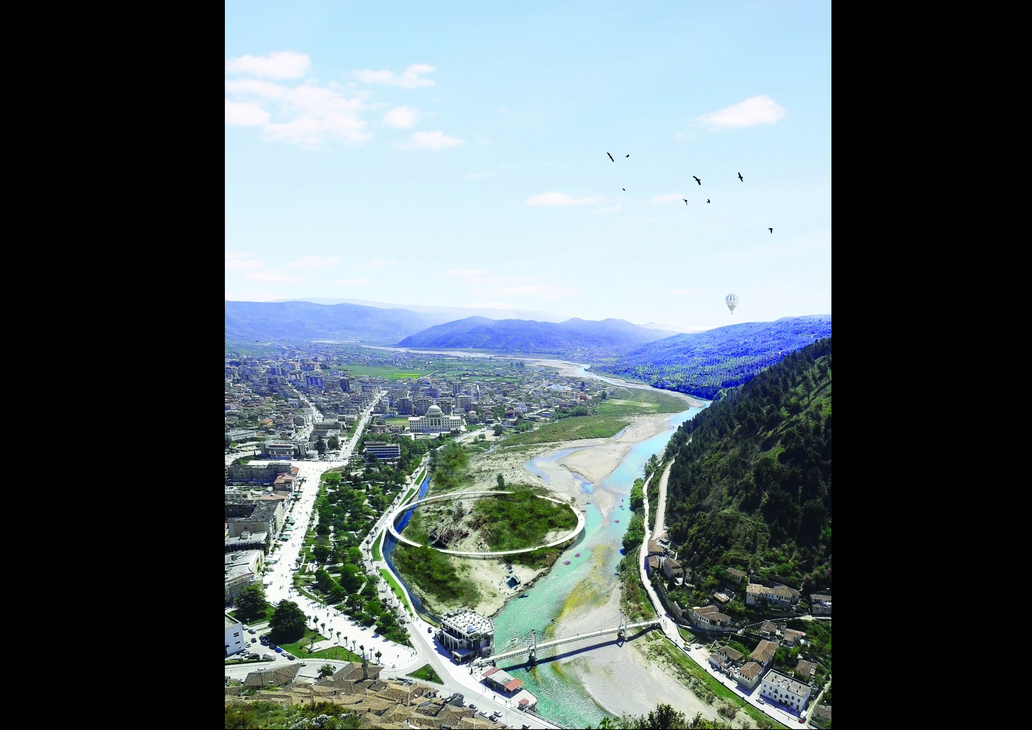Osumi River Park
VISION
Berat is a historical city located in the Southern part of Albania. The city is very important in terms of historical architecture of the country and is inscribed under the UNECSO World Heritage Convention.The Island of Berat, is morphologic geographical site formed by the river Osum. The island represents an interesting opportunity to test the creation of resilient places towards natural conditions.
The Island of Berat represents a perfect opportunity to be used as a connecting point for the historical site of the city. Hence, it is aimed to convert this space as part of the network of the city and its neighboring urban spaces.
Berat lays parallel to the river Osum, mimicking the geographical morphology of the hills, which define the boundaries of the city. Taking into consideration two neighborhoods, Mangalem- where the castle is found and Goricë- these are the narrowest parts of the city, where can be found the bridge that connects these two parts. Hence, all the activities of the city are concentrated parallel to the Osum River. The Berat Island represents a possibility to expand the city while preserving its shape. The island can perform as a central part of the city while serving as a site for tourist and at the same time as a site for urban ecology and even urban wildlife.
The perpendicular tracks will make possible to connect pedestrians with the hills of the city, as well as will serve as a shortcut to other nature sites surrounding the city. Thus, these trucks would run across the Berat Island, than in the city center, moving along the pedestrian areas, parks and then again to the hills near the city. It is proposed that these perpendicular tracks would be a good connection to the urban environment, natural environment, public spaces within Berat as well as form an easy escape to the new formed urban natural public space-
THE OSUMI RIVER PARK.
The Island of Berat should be a resilient space. The land site and the river has been long fighting for a territorial identity. Thus, first it need to be studied the natural interaction of the river and the land. It is being observed that Osum River continuously creates different morphologies to the island, or the Islands, as we would prefer to call them. These geographical morphologies are worth studying as are the key variables to understand the relationship of the island to the water. Studying the movement of this geographical morphologies in different given times, it is possible to learn about the history of these islands.
Hence, our vision is first to study the interaction of the water and the land, using archives, photo image and other data and evidence including the level of the river water in different times of the year. This methodology will make possible the creation of a tool kit that can be universal in it usage in other areas with similar variables as the Berat Island.
STRATEGIES
This strategy is mainly based on accepting the actual situation and the fact that flooding is an inevitable issue, in no massive intervention scenarios. On the other hand the impact of these sorts of interventions will not affect the biodiversity of the river. When talking about physical impact, this strategy consists on the creation of simple bridge-like passages and small afforestation interventions. The costs required are very low and they are related with a short-term scenario implementation. With this sort of intervention as long as it is accepted the fact that the island can be flooded during a certain period of time, the usability will be less than 100% of the whole surface of the island, but still the utilization of the paths and bridges will be consistent. On the other hand we have again a very strong impact in the city, as long as the shape of intervention leaves a mark on the city pattern. One extra advantage of this strategy is that it requires les maintenance and preserves nature into its wild state.
Afforestation: Trees are planted near to the river. This means greater interception of rainwater and lower river discharge. This is a relatively low cost option, which enhances the environmental quality of the drainage basin.
Ecological flooding: The River is allowed to flood naturally in places, to prevent flooding in other areas – for example, near settlements.
DESIGN ANALYSIS
Through a general overview of Berat’s typography and morphology the placement of the island is quite remarkable. Though its existence is not much livable due to its accessibility problems. If we observe further the changing topography of the river the composition of several small islands and the growth of green vegetation we mark that the creation of the island was as a cause of the funnel shape of the river bed when reaching the city center. In the diagram where we analyze the location of the functions around the city as well as the accessibility network we mark that the concentration of the tourists attractions, and the UNESCO World Heritage sites, are located to the northwest of our site. Some other attractions are located to the northern part of the site and are related with the area only visually and have as a divider the wall barrier that lays along the river. If we analyze the accessibility network we read different types of paths and pedestrian networks. Some of the most remarkable are the historical paths inside the old neighborhoods. Such a way we consider very important to emphasize the pedestrian pattern by giving a slight contribution to the city.
As an attractor the island holds interesting potentials. In a general analysis of the urban, touristic and green attractions the island will hereby be integrated as an important hub of recreation. In these terms the island will in such way dress different types of attractions and be a contributor to each of them. The urban attractions as the central ones and secondary ones, spread around the city and correlated to each other throughout the thin line of accessibility between Gorica and Mangalemi neighborhoods. UNESCO’s World Heritage sites are the main tourist attractors of Berat and do give a very strong identity to the whole city. But in a more detailed analysis the Castle stays more separated from the other two sites. The most accessed area is Mangalemi neighborhood; still Gorica is a bit bypassed. On the other hand the green gives a very potent impact in the city and dresses up a second identity to it.
The new urban park is located in the central heart of the city, along the river. On the other hand the river holds a very impressive potential but lacks accessibility. On the other hand the lower eastern part of the river is very much accessible but located further away from the other attractions. We do have the mountain toping with the castle, which represents a very strong visual impression. The island in itself is a very natural created composition and changes it’s shape and vegetation during different periods of the year. In relation to these three different attractors we start to dress to the island portions of them, such a way to make it a very strong mark for the city itself. Our touch is very slight and in terms as an urban attractor would be a new hub of events lived into the wild.
The island can host from concerts and huge events to simple daily life activities such as fishing or jogging. As a tourist attractor besides offering it’s own events such as a stop point for rafting, green activities or festivals, the island with our intervention offers an interesting observation pedestrian path from which one can enjoy the view of the all the three to historical together. Our proposal is in such terms a slight touch to the existing natural island, emphasizes the qualities of the land and contributes to it by offering a new experience of enjoying wild nature, landscape and new public events.
In a more visionary proposal the continuity of our project would be the connection within the island, the green existing park and pedestrian area, the old neighborhoods and the castle. The network of pedestrian paths, connections and impressions is marked by three interesting moments. The first one is the mark we leave into the land, which is a circle path that surrounds the center of the island. Thereby going toward the city, we redefine the border within the city and the river. The new pedestrian area consists on the coexistence of green areas and tiny paths. The last stage of intervention is the addition of electric stairs that take locals and tourists from Mangalami neighborhood up to the castle. The creation of this connection will enrich the existing pattern.
WHY A CIRCLE?
The circle is a symbol of union, landmark and natural shape throughout the ancient history and civilizations. We find the circle in ancient human settlements that mark a very important spiritual and physical relation with the nature. Such example is the very impressive Stonehenge. The circle in itself has always fascinated humans with its perfect shape. Still the circle is a metaphor for the cycle of life, for all the new beginnings for its absolute perfection and for the elegance of the shape. Current flows show that there is no connection between the existing urban fabric and the riverfront at the present day. We redefine the edge by introducing the circle that sews up city of Berat with the island by a new riverfront. The circle generates a new flow system along the riverfront and inside the island, activating the whole area.
DESIGN PROPOSAL
The existing green of the island is very wild and has a casual growth. It includes different types of vegetation where on the highest points trees characterize the landscape. On its slope the lower vegetation, such as types of grasses and bushes rein the whole surface. On the other hand mud land and groups of rocks cover the land closer to the riverbed. In our approach we keep the nature as it is, in a wild state, and introduce only the path that slightly touches the ground. Our footbridge has three openings, one main connection with the riverfront and two other connections with the island on its highest points. By making this slight intervention and preserving the actual state we do as well accept the fact that future floods can happen. On those scenarios what will be left above the water is only the ring footbridge. In this case with the addition of the bridge the eluviation will deposit soils and rocks to the bridge pylons. The depositions after a certain period of time will become potential space for new green growth. In this way the landscape will be on a continuous state of change.
We can divide the deposition of sediments in three phases. Everything starts while in winter and the river has a stronger stream and higher quantity of water. The high intensity of water fills up the riverbed and floods the wetlands. The River brings with itself huge eluviation such as soil and pebbles. The second moment of the scenario is when sediments deposit on the bridge pylons. The depositions create such a way smaller compositions of land. While the time passes the sediments will augment and cause a natural growth of wild vegetation. Such a way there will be a natural addition of the landscape. This proposal protects and emphasized more the biodiversity of the land and contributes to the creation of a complex pattern.
The two scenarios depicted in the visualizations show the relation within the River, the footbridge and the Osumi River Park. In the first scenario, during summer time most of the Osumi Island is uncovered and such a way the utilization of the land is in it’s highest peak. On the other hand the winter scenario shows the river on medium flow intensity and the most accessed area is the footbridge. The flooding scenario that affects the city in itself, but still in history is shown as a very rare case, it is caused by the sewage system and the rain water system of the city of Berat.
Because of the rise of the river water the pipe system is flooded and such as way the city in itself is flooded. To prevent such dark scenario the intervention needed is the proposal of new sewage and rain water system. Throughout this strategy the water is channeled into a system that goes along the river and deposits the waters outside of the city.
With this strategie of intervention and protection of the existing flora and fauna we propose the creation of the new Osumi River Park. The River Park is now fully exposed and the ring footbridge is integrated with the landscape. The ring looks like it has always been part of the landscape and gives the opportunity to access the natural landscape. The fluid movement of a revealing promenade from which one can enjoy the view of the historical city of Berat and its natural beauties surrounds the wild park. The space located within has now the pottential to host from huge events to simple daily life experiences. We have such a way created a new landmark that empasizes the attractions of the city and becomes an attraction in itself.

